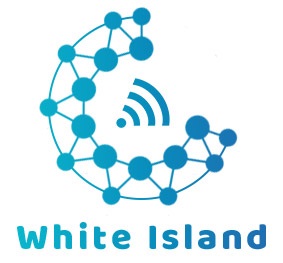Energy management in networks has become a top priority as industries strive to optimize operations and reduce their environmental footprint. One framework making a significant impact in this space is MIMOSA. But what exactly is MIMOSA, and what role does MIMOSA play in energy management of networks? In this article, we’ll explore how MIMOSA plays a pivotal role in improving energy management in network systems.
What is MIMOSA and How Does It Work?
Product MIMOSA (Modular Integrated Management of Service-Oriented Architecture) is a framework designed to streamline the management of complex systems like energy networks. In essence, it serves as an open, standardized framework that enables seamless communication between different devices, software, and data streams within a network.
So, what role does MIMOSA play in energy management of networks? MIMOSA facilitates the monitoring and management of energy flows across a network by integrating sensors, data analysis tools, and control systems. It allows network operators to collect data in real-time, enabling smarter decisions about energy distribution and usage. This role of MIMOSA is crucial to ensuring optimal energy consumption and efficient network operations.
The Growing Need for Energy Management in Network Systems
With the rapid expansion of global digital infrastructure and the rise of smart cities, network systems are under increasing pressure to operate more efficiently. Energy management is no longer just a concern for utility companies but for almost every business that relies on energy-heavy network infrastructure.
Why is energy management important? Poor energy management can lead to high operational costs, increased carbon footprints, and inefficient network performance. By adopting smart energy management systems like MIMOSA, networks can reduce energy waste, optimize consumption, and improve overall operational efficiency. This is where the role does MIMOSA play in energy management of networks becomes crucial—optimizing operations for sustainability.
How MIMOSA Enhances Energy Efficiency in Networks
MIMOSA doesn’t just track energy consumption; it optimizes it. The framework enables real-time energy monitoring, predictive analysis, and adaptive control, allowing networks to function more efficiently by balancing energy supply and demand.
- Energy Monitoring and Optimization: MIMOSA integrates advanced analytics to track how energy is being used in the network. By analyzing this data, it identifies inefficiencies and helps reduce waste, which directly translates to cost savings and a lower carbon footprint. This is a prime example of how the role does MIMOSA play in energy management of networks contributes to more sustainable and efficient operations.
- Predictive Energy Analysis: MIMOSA also uses predictive modeling to forecast energy needs, ensuring that resources are allocated where and when they are needed most. This minimizes overuse and prevents outages by adapting to fluctuations in energy demand. Here, the role does MIMOSA play in energy management of networks is pivotal in ensuring that energy resources are used optimally across the network.
Real-World Applications of MIMOSA in Energy Networks
Across various industries, MIMOSA has shown its value by significantly improving energy management. In telecommunications, for instance, MIMOSA helps reduce the energy consumption of data centers and transmission networks by streamlining energy use and making real-time adjustments.
- Case Study: Telecommunications Networks
One example is how telecom companies have used MIMOSA to monitor the energy usage of their network equipment. By collecting real-time data from network components, MIMOSA enables these companies to identify areas of high consumption, making it easier to target efficiency improvements. This is a clear demonstration of the role MIMOSA plays in energy management for complex network systems. - Case Study: Smart Grids
In the case of smart grids, MIMOSA helps manage the complex interplay between energy generation, storage, and consumption. By optimizing how energy is distributed across the grid, it ensures that resources are used as efficiently as possible, showcasing how the role does MIMOSA play in energy management of networks can revolutionize energy distribution.
The Future of MIMOSA in Network Energy Management
As technology continues to evolve, so too does MIMOSA’s potential in energy management. The future of MIMOSA lies in its ability to integrate with emerging technologies such as artificial intelligence (AI), the Internet of Things (IoT), and blockchain.
- AI and IoT Integration
MIMOSA’s ability to work with AI and IoT will make it even more powerful. AI can help analyze vast amounts of energy data in real-time, while IoT devices can continuously feed this data into the MIMOSA framework. This synergy will enable better predictions and more proactive energy management strategies, further amplifying the role does MIMOSA play in energy management of networks. - Blockchain for Transparency and Security
MIMOSA is also exploring the integration of blockchain for secure, transparent energy transactions. Blockchain could provide a way to track energy usage, manage distributed energy resources, and ensure that data is tamper-proof and reliable, strengthening the framework’s ability to support the energy management needs of modern networks.

Q&A Section: Answering Common Questions About MIMOSA and Energy Management
- What makes MIMOSA different from other energy management solutions?
MIMOSA is unique because it provides a flexible, open framework that can be integrated with a wide variety of energy management systems. Its focus on real-time monitoring and predictive analytics helps networks optimize energy consumption and reduce waste more effectively than traditional methods, cementing the essential role MIMOSA plays in network energy management. - Can MIMOSA be applied to all types of network infrastructures?
Yes, MIMOSA can be adapted to different network types, including telecommunications, smart grids, and even industrial energy systems. Its modular nature allows it to scale and integrate with existing infrastructure, demonstrating the versatility of the role MIMOSA plays in various types of energy networks. - How does MIMOSA reduce energy waste in networks?
By continuously monitoring energy consumption and making real-time adjustments, MIMOSA identifies inefficiencies that may otherwise go unnoticed. It can also predict future energy needs, ensuring that resources are used optimally and not wasted. This continuous optimization is a crucial aspect of the role MIMOSA plays in energy management. - What are some challenges when implementing MIMOSA in network systems?
Some challenges include ensuring compatibility with existing systems, managing the complexity of integrating real-time data from multiple sources, and training personnel to effectively use the MIMOSA framework. However, these challenges can be overcome with careful planning and integration. - How does MIMOSA contribute to sustainability in network operations?
MIMOSA helps reduce energy waste, lower operational costs, and minimize the environmental impact of network operations. By optimizing energy use, MIMOSA makes network systems more sustainable, contributing to broader environmental goals. This showcases the important role MIMOSA plays in promoting sustainability in energy networks. - What is the future potential of MIMOSA in energy management?
The future of MIMOSA is bright, especially with the potential integration of AI, IoT, and blockchain. These technologies will further enhance MIMOSA’s ability to manage energy resources more effectively and efficiently, paving the way for smarter, more sustainable networks. This future evolution underscores the ever-growing role of MIMOSA in network energy management.
Conclusion:
MIMOSA is not just a tool for optimizing energy consumption; it’s a comprehensive framework that enables smarter, more efficient energy management in network systems. By facilitating real-time monitoring, predictive analytics, and integration with emerging technologies, MIMOSA plays a critical role in helping networks reduce energy waste, lower costs, and promote sustainability. As the demand for efficient network management grows, the role MIMOSA plays will only become more vital in shaping the future of energy networks.
For more insights into network energy management, visit us at wizland.



